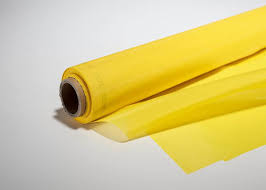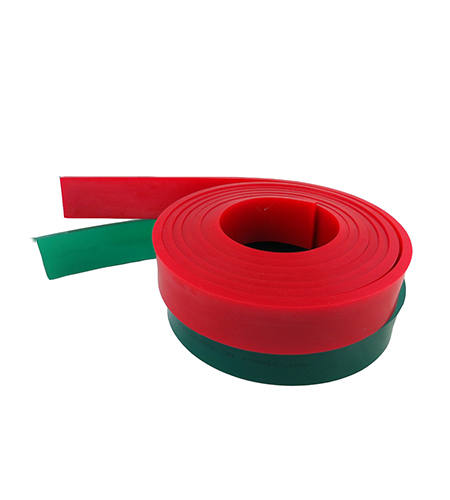Generally speaking, the production process of screen making is different because of the different photosensitive materials used. However, no matter which process is adopted, the following steps are indispensable in screen production: screen and frame selection, screen drawing, screen washing, photosensitive material coating, exposure, development, drying
exposure, development, drying
I. exposure.
Paste the film surface of the negative film on the printing surface (convex surface) of the screen, and then expose it in the vacuum exposure machine. The exposure time depends on the thickness of the photoresist, the energy of the exposure lamp and the requirements of the screen (generally, the exposure time required for the circuit, solder mask, character and screen is different). Generally, the exposure time shall be measured with the help of the exposure scale before use, and then the exposure time of the screen shall be fixed.
Steps:
First of all, with the help of a magnifying glass, align the longitude and latitude of the wire Mesh, and the line should be parallel and vertical to the wire Mesh. (Note: especially lines and characters)
Put the calibrated net into the exposure machine, adjust the time, and turn on the exposure machine switch when the vacuum is reached.
Note: if the exposure time is too short, the photoreceptor will fall off easily, the line will become thick, the solder stop will not be firm, and the character number will not be firm; if the exposure time is too long, it will cause quality accidents such as endless development or thin line. Therefore, it is particularly recommended that the accurate exposure time comes from scientific practice. Before exposure in production, the exposure time must be measured with an exposure meter, and then the exposure time shall be fixed. Do not work blindly by experience.
Two, development
Remove the screen from the exposure machine, remove the negative film, first wet both sides of the screen with gentle non pressure cold water (warm cold water 20-30 ℃), after about 30-60 seconds of wetting, then wash thoroughly with a high-pressure water gun until the image appears, then use an absorbent cloth to absorb the excess water around, and then put the screen into a 30-40 ℃ oven for drying.
Step: wet both sides of the exposed screen with water for about 1 minute, and wash the screen with high-pressure water until it is completely clear;
Contrast in the light to see if it is completely clear and if the plate making is successful. If it is not good, redo it;
After drying the wet Mesh, put it under the light box, and use the sealing slurry to repair the defects such as sand hole and burr.
3、 Check to be used
After the screen is dried, carefully check whether the screen plate meets the production and processing requirements. If it meets the requirements, immediately seal the screen, so that the production personnel can use it. If it does not meet the requirements, immediately repair or remake it.
4、 Detailed explanation of screen making process
Generally speaking, the screen production process is different because of the different photosensitive materials used, but no matter which process is adopted, the screen production process can not be short of the following steps: screen and screen frame selection, screen drawing, screen washing, coating photosensitive materials, exposure, development, drying. Let's learn about the operation methods and precautions of each process in detail.
1. Selection of wire Mesh
At present, there are many kinds of screen on the market, such as silk screen, nylon screen, polyester screen, metal screen, etc., generally considering from the cost and applicability, nylon screen is the most commonly used type of screen on the market.The characteristics of nylon screen are introduced. Nylon screen has many characteristics, such as smooth surface, good ink permeability, softness, large elasticity, strong adaptability, good tensile strength, elasticity and friction resistance, large nodule fastness, long service life, acid resistance, chemical resistance and organic solvent resistance. Therefore, it is favored by fine printing and widely used in fine line drawing pattern and dot printing 。Precautions for use: in addition to the above advantages, nylon wire Mesh also has some disadvantages, such as large elongation, low heat resistance, etc. Therefore, the following points should be paid attention to when making nylon wire Mesh available:
1. Due to the large elongation of nylon screen, it is required to use the screen frame and tension screen machine with high strength during printing;
2. In view of the low heat resistance of nylon wire Mesh, it is not necessary to fix the wire Mesh with heat-soluble method during printing;
3. The ultraviolet ray will also have some effects on the nylon screen. Therefore, when keeping the nylon screen or its corresponding screen plate, please pay attention to avoid the light.
2. Selection of net frame
According to the material, the net frame generally has wooden frame, aluminum frame, stainless steel frame, commonly used wooden frame, aluminum frame, iron frame, etc.
1. Wooden frame: it is cheap and easy to make. It can be stretched manually or mechanically. However, its disadvantages lie in low charging and easy to deform, which is only suitable for low cost. Precision products are not suitable for fast and high-precision screen printing. In addition, the screen drawn from the wooden frame is easy to relax and has poor recovery.
2. Iron frame: compared with wood frame, it has the characteristics of stable size, strong and durable, but its weight, easy to rust, inconvenient to use, and only can be used for mechanical Mesh.
Five. Pull nets.
In general, there are three methods of drawing Mesh: manual, mechanical and pneumatic. For example, the first two methods are generally adopted in the silk screen printing factory if the requirements for accuracy are not high. If the requirements are high, the last pneumatic drawing machine can be used. The pneumatic drawing machine is suitable for high-precision screen drawing. It is characterized by uniform tension, easy to use, and can meet different requirements of the tension, especially suitable for drawing high-precision color plate printing
Six, wash nets
In printing and plate making, special chemicals are generally used to wash the screen (such as water for film removal, diluent, detergent, etc.), but this method consumes time, so it is a little troublesome for those processing factories that stress aging. Here we share an effective method: Choose washing powder with strong decontamination power, such as tide, wet the screen, and then polish it with cotton cloth The method can be described as "one sword, two sculptures" in addition to fast pollution and good adhesion of photoresist. (Note: for the above methods, double-sided printing is required during grinding, and when grinding the front side, the force should be lighter to prevent the Mesh from falling off.) After washing the net, put the net in the dryer for drying.
Seven. Coating
1. Selection of photosensitive materials
At present, there are two kinds of photosensitive materials on the market, one is photosensitive glue, which has the advantages of simple technology, economy and practicality, fast exposure speed, durable screen, easy to remove film, and excellent solubility. The other is photosensitive film, which is a kind of pre sensitized photosensitive material. It is pasted on the silk screen before the exposure of the silk screen. It has the advantages of hydrophilicity, strong resolving power, good sharpness of lines, firmness and durability, and its performance is superior to the photosensitive adhesive. Because of its hydrophilicity, it is commonly known as "phenanthroline". Generally speaking, the requirements of printing on photosensitive materials are: the plate film formed by photosensitive materials shall be suitable for the performance requirements of different types of inks, and have considerable printing resistance, can withstand a considerable number of scraping of the scraping plate, and has good binding force with the screen, does not produce film failure during printing, and is easy to peel off, which is conducive to the regeneration and utilization of the screen plate.
2. Coating
Required items: photoresist, sizing machine (scraper), screen stand. The photosensitive pulp on the market requires its own use. You can use hot water to wet the photosensitive powder first, and then pour it into the photosensitive pulp to fully mix, and put it for several hours before use. Small factories can use plate making workers to finish sizing, while large factories have automatic sizing machines with uniform thickness. The operation steps are as follows:
(1) Put the dry net to be used on the gluing table, place the screen plate stably, and pour the sensitive glue into the scraper. (Note: appropriate amount)
(2) Use the scraper to evenly apply the photosensitive glue on the screen, first apply the printing surface (convex surface of the screen), then apply the oil ink surface (concave surface of the screen), generally three times on each side.
(3) Then dry the Mesh for the first time. (Note: secondary coating is required for line and character screen printing)
(4) If the thick screen is required, it can be applied several times, that is, after the first application of glue, immediately put it into an oven at 30-40 ℃ for drying, take out the screen and apply glue again. According to the required thickness, determine the application times. Note that the general printing surface (convex surface) should be coated 2-3 times more than the oil ink surface (concave surface). This operation is the second coating. (Note: this coating is only carried out on the contact surface of the screen) · use the electric blower or oven to dry, do not have the phenomenon of virtual drying or not drying, so as to avoid affecting the quality of plate making. (Note: peeling off photoresist) Note: the gelatinizing process is very important. The quality of the screen depends on the gelatinization. It is required that the thickness of the screen is uniform and has a three-dimensional sense.
3, drying
After finishing the application of the photosensitive adhesive for silk screen printing, first leave it for 1-2 minutes, then put the silk screen in an oven at about 40 ℃ for drying, and then take it out and put it in a dark frame for use. Note: the screen must be dried, otherwise it will affect the firmness of the screen.



